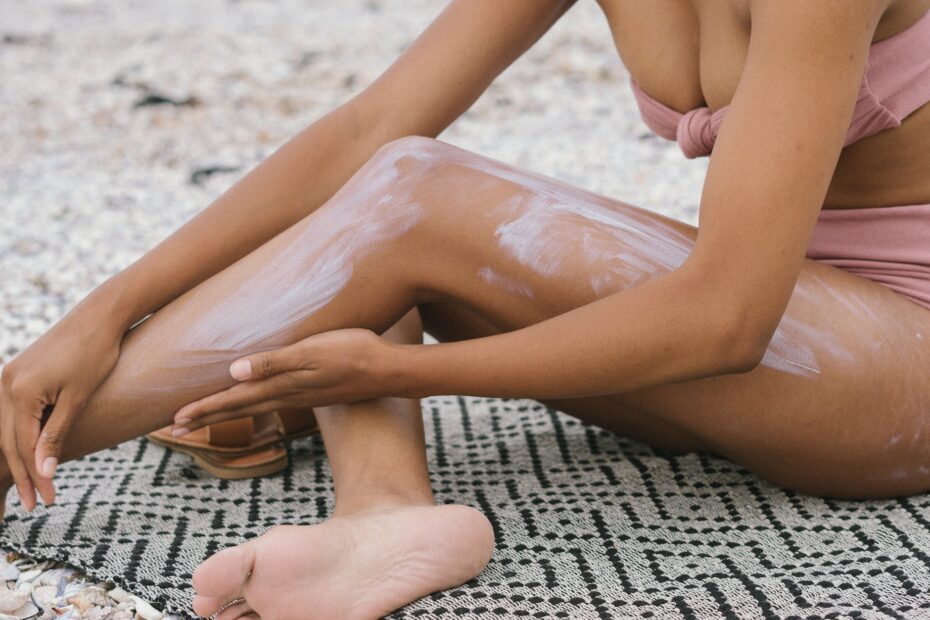Say goodbye to chafing itchy woes with expert advice from a dermatologist. Chafing can be a frustrating and uncomfortable problem, but with the right remedies and tips, you can keep your skin comfortable and irritation-free. Whether you’re an athlete, a busy parent, or someone who simply wants to enjoy their day without the discomfort of chafing, this article will provide you with valuable insights.
Discover how to prevent and treat chafing by following the advice of a dermatologist. Chafing occurs when friction between the skin and clothing or skin-on-skin contact leads to irritation and inflammation. It commonly affects areas such as the thighs, underarms, and groin. By understanding the causes and symptoms of chafing, you can take proactive steps to avoid it.
Explore effective strategies and preventive measures to keep chafing at bay. From choosing the right clothing materials to using lubrication techniques and implementing a proper skincare routine, there are various ways to prevent chafing. With the expert guidance provided by a dermatologist, you can say goodbye to chafing and hello to comfortable, irritation-free skin.
Understanding Chafing
Understanding Chafing
Chafing is a common skin irritation that occurs when there is repetitive friction between the skin and clothing or skin-to-skin contact. This friction can lead to redness, soreness, and discomfort. It commonly affects areas where there are folds or creases in the skin, such as the inner thighs, underarms, groin, and buttocks.
There are several factors that can cause chafing. One of the main culprits is moisture, as sweat can increase friction and make the skin more susceptible to irritation. Tight-fitting clothing or rough fabrics can also contribute to chafing. Additionally, activities that involve repetitive movements, such as running or cycling, can exacerbate the problem.
Common symptoms of chafing include redness, tenderness, itching, and a burning sensation. In severe cases, blisters may also develop. It is important to recognize these symptoms early on to prevent further discomfort and potential infection.
To prevent chafing, it is essential to keep the affected areas clean and dry. Wearing loose-fitting, breathable clothing made of moisture-wicking fabrics can help reduce friction. Applying a lubricant, such as petroleum jelly or anti-chafing balms, can provide a protective barrier between the skin and clothing. Regularly moisturizing the skin can also help maintain its integrity and reduce the risk of chafing.
In conclusion, understanding the causes and symptoms of chafing is crucial for effective prevention and treatment. By implementing the right strategies, such as choosing appropriate clothing and practicing good skincare, you can say goodbye to chafing and enjoy comfortable, irritation-free skin.
Preventing Chafing
Preventing chafing is crucial to maintaining healthy and comfortable skin. By implementing effective strategies and preventive measures, you can avoid the discomfort and irritation caused by chafing. One of the key factors in preventing chafing is making proper clothing choices. Opt for breathable fabrics that reduce friction and allow air circulation, such as cotton or moisture-wicking materials. Avoid tight-fitting clothes that can rub against the skin and cause chafing.
Another important preventive measure is using lubrication techniques. Apply a thin layer of petroleum jelly or anti-chafing balms to areas prone to chafing, such as the inner thighs or underarms. This creates a protective barrier that reduces friction and prevents chafing. Additionally, maintaining a good skin care routine is essential. Keep your skin clean and moisturized to enhance its resilience and reduce the risk of chafing. Regularly exfoliate to remove dead skin cells and promote healthy skin.
To summarize, preventing chafing involves making smart clothing choices, using lubrication techniques, and maintaining a proper skin care routine. By implementing these strategies, you can keep chafing at bay and enjoy comfortable, irritation-free skin.
Frequently Asked Questions
- What is chafing?
Chafing is a common skin irritation that occurs when there is repetitive friction between skin surfaces or between skin and clothing. It can result in redness, soreness, and sometimes even blisters.
- What causes chafing?
Chafing is commonly caused by activities that involve repetitive motion, such as running, walking, or cycling. It can also be triggered by ill-fitting clothing, excessive moisture, or hot weather conditions.
- Which areas of the body are prone to chafing?
The areas most prone to chafing are the inner thighs, groin, underarms, nipples, and buttocks. These areas experience frequent friction and are more likely to develop chafing.
- What are the symptoms of chafing?
Common symptoms of chafing include redness, tenderness, itching, burning sensation, and the formation of small, painful bumps. In severe cases, chafed skin may even break and bleed.
- How can I prevent chafing?
To prevent chafing, it is important to wear moisture-wicking and breathable clothing that fits well. Applying a lubricant or anti-chafing balm to vulnerable areas can also reduce friction. Keeping the skin clean and dry, especially during physical activities, is essential in preventing chafing.
- How can I treat chafed skin?
If chafing occurs, it is important to clean the affected area gently with mild soap and water. Applying a soothing ointment or cream can help relieve discomfort and promote healing. Avoiding further friction and keeping the area dry are also crucial in the healing process.
- When should I seek medical attention for chafing?
If the chafed area shows signs of infection, such as increased pain, swelling, pus, or spreading redness, it is advisable to seek medical attention. Additionally, if the chafing does not improve within a few days or becomes increasingly painful, a dermatologist should be consulted.


Keith is originally from Truckton, Colorado. The 54-year-old cared for his overweight wife for many years. Keitch is also a freelance editor at antichafing.net and supports the team as a competent advisor. In his spare time Keith enjoys reading books, visiting his homeland and is a passionate product tester for well-known manufacturers.

